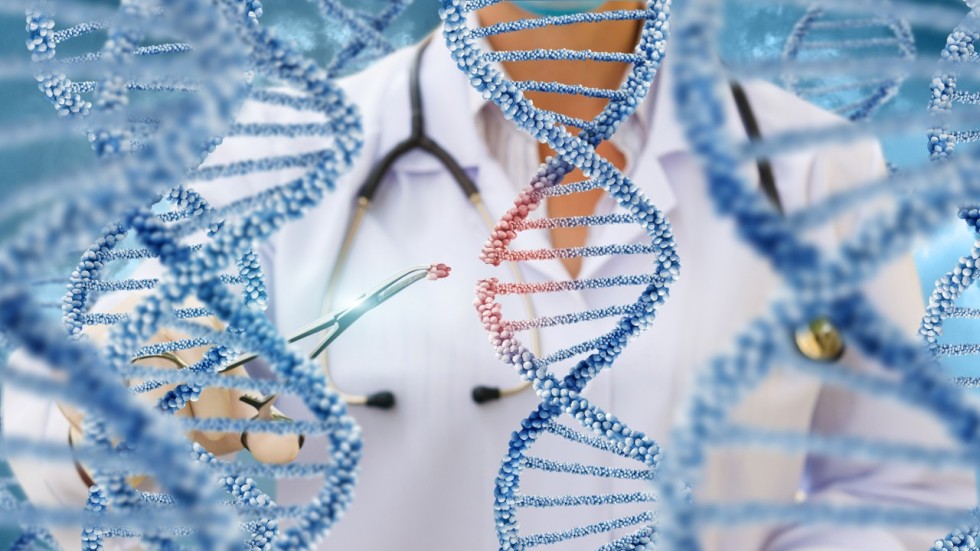
The scientific community is largely aghast at the claim that a woman in China gave birth to the world’s first genetically edited babies earlier this month, born from embryos modified to make the twins resistant to HIV infection.
The announcement was made on Monday by Chinese scientist He Jiankui on the eve of the Second International Summit on Human Genome Editing, held in Hong Kong, where the world’s leading thinkers in the field have converged to discuss the technology and its ethics.
His claim has deepened the sense of urgency surrounding the debate on the morality of gene editing, one that has already intensified in recent years with the rapid advance of technology.
Who has invested in Chinese scientist He Jiankui’s biotech start-ups?
These advances are largely due to the discovery of a powerful gene editing tool known as CRISPR-Cas9, whose gene editing applications were first identified by University of California, Berkeley biochemist Jennifer Doudna and Emmanuelle Charpentier, director of the Max Planck Institute for Infection Biology in Berlin.

While technologies allowing scientists to edit strands of DNA have been in development since the 1970s, the discovery of CRISPR-Cas9 has accelerated the abilities of scientists to enhance crops, control infection, and eliminate hereditary diseases. It also opens the door to radical changes to human DNA – it was this technology that was purportedly used by He to prevent the newborn twins inheriting HIV infection.
What do we know about He Jiankui’s claim to have created the first genetically modified babies?
What is gene editing?
Genes are sequences coded into strands of DNA; they determine an organism’s traits, development, and, in some cases, which diseases they will get. Scientists have the ability to change a DNA sequence, or gene, within a living cell, “editing” the gene and changing how it is expressed in the organism. With gene editing, scientists can swap out the DNA building blocks of a disease-producing gene for new genetic code that doesn’t produce the disease.
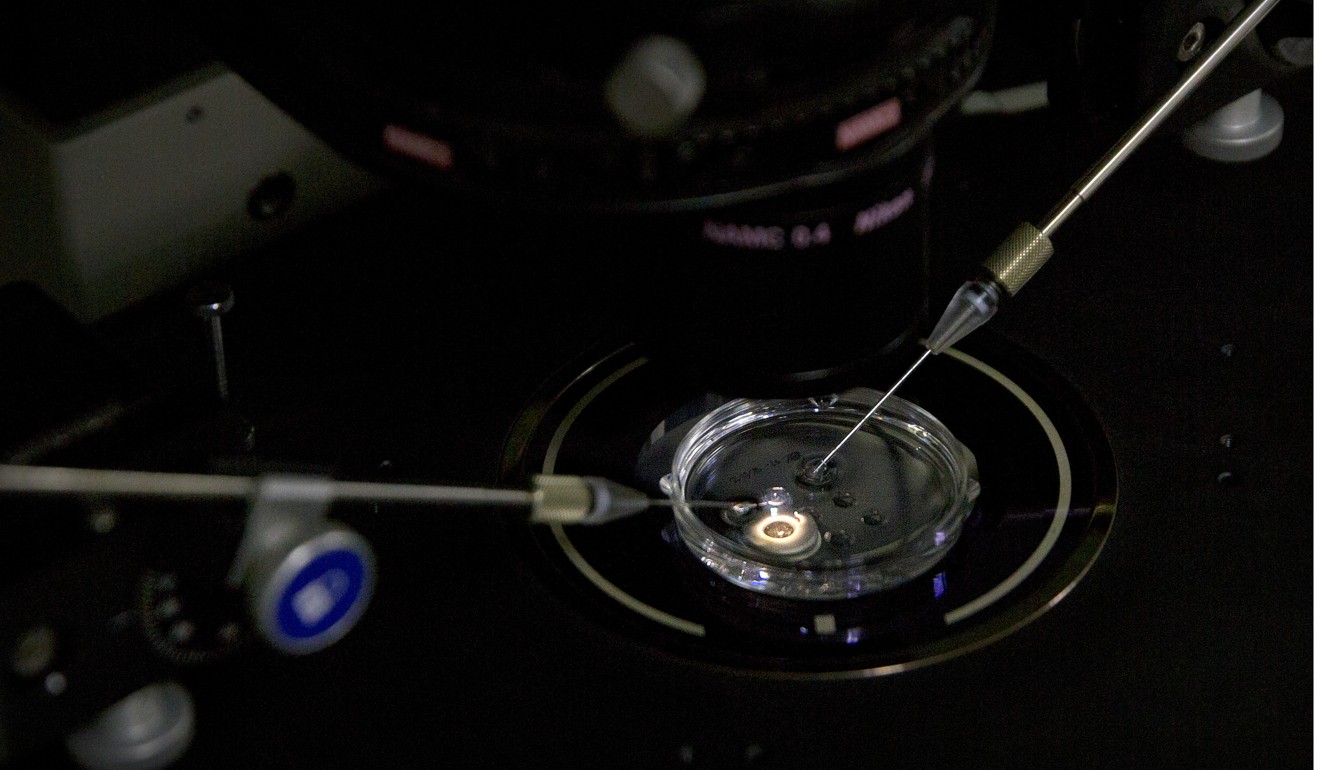
“Genome” is a broader term that refers to an organism’s entire DNA sequence, or the entire road map for an organism. Using techniques such as CRISPR-Cas9, scientists now have the power to not just engineer the expression of a certain gene, but to target multiple genes along a DNA strand, thus creating more impact on the genome.
Ethics and safety are key with probe into claims of gene editing
What is CRISPR-Cas9?
CRISPR-Cas9 is a molecular system that acts as a pair of very precise scissors, pinpointing the right spot on a strand of DNA to cut out a gene and insert its replacement. It is a tool that was borrowed from an immune system found in bacteria, where CRISPR molecules stored genetic code from past infections in order to defend against them. When harnessed by scientists, CRISPR molecules can match and find DNA sequences, while Cas9, its accompanying enzyme, binds and cuts DNA.
Other gene editing techniques that use enzymes to target DNA existed prior to 2012 and are still in use, such as zinc-finger nucleases (ZFNs) and transcription activator-like effector nucleases (TALENs), but these are considered less precise and more expensive for laboratories to use as compared to CRISPR-Cas9.
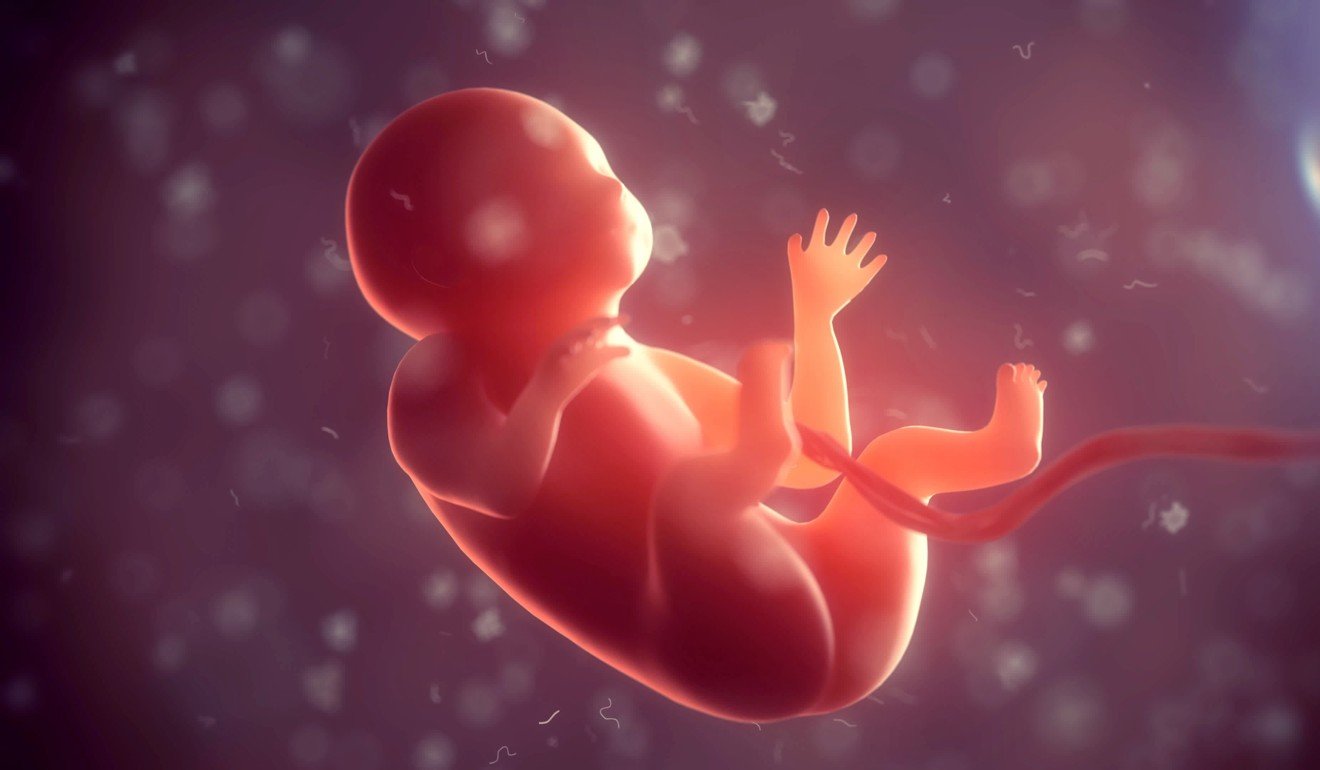
How advanced is genome editing technology today?
The CRISPR technique has already been used to change plants and animals. Earlier this year, researchers at Imperial College London used the technology to find a key that could wipe out the world’s mosquito population, while those at the University of Edinburgh produced virus-resistant pigs. There are numerous agricultural applications, from mushrooms that do not brown, created by a Pennsylvania State University professor in 2016, to tomato plants with fewer excess branches, developed by scientists from Cold Spring Harbour Laboratory in New York. The products of these advances, at this point, are limited to laboratories.
Chinese scientist He Jiankui reveals another woman may be pregnant with gene-edited baby as he apologises for sparking global controversy
The use of CRISPR and similar technologies to counter human disease is one of the most compelling potential applications capturing research funding and scientists’ attention. The wide ease of use of CRISPR means that labs around the world are using it to look at how gene editing can eliminate diseases from haemophilia to HIV. Chinese scientists were the first to experiment with injecting cells with CRISPR-modified genes directly into humans. They used the technique to remove a gene that stops the body’s immune system attacking cancer cells, in a 2016 clinical trial with a lung cancer patient at Chengdu’s Sichuan University. Last year a private company in California made the first attempt to allow proteins to edit genes directly within the body, as opposed to modifying cells and then injecting them, in a bid to stop genes that produce Hunter syndrome. That procedure relied not on CRISPR, but ZFNs.
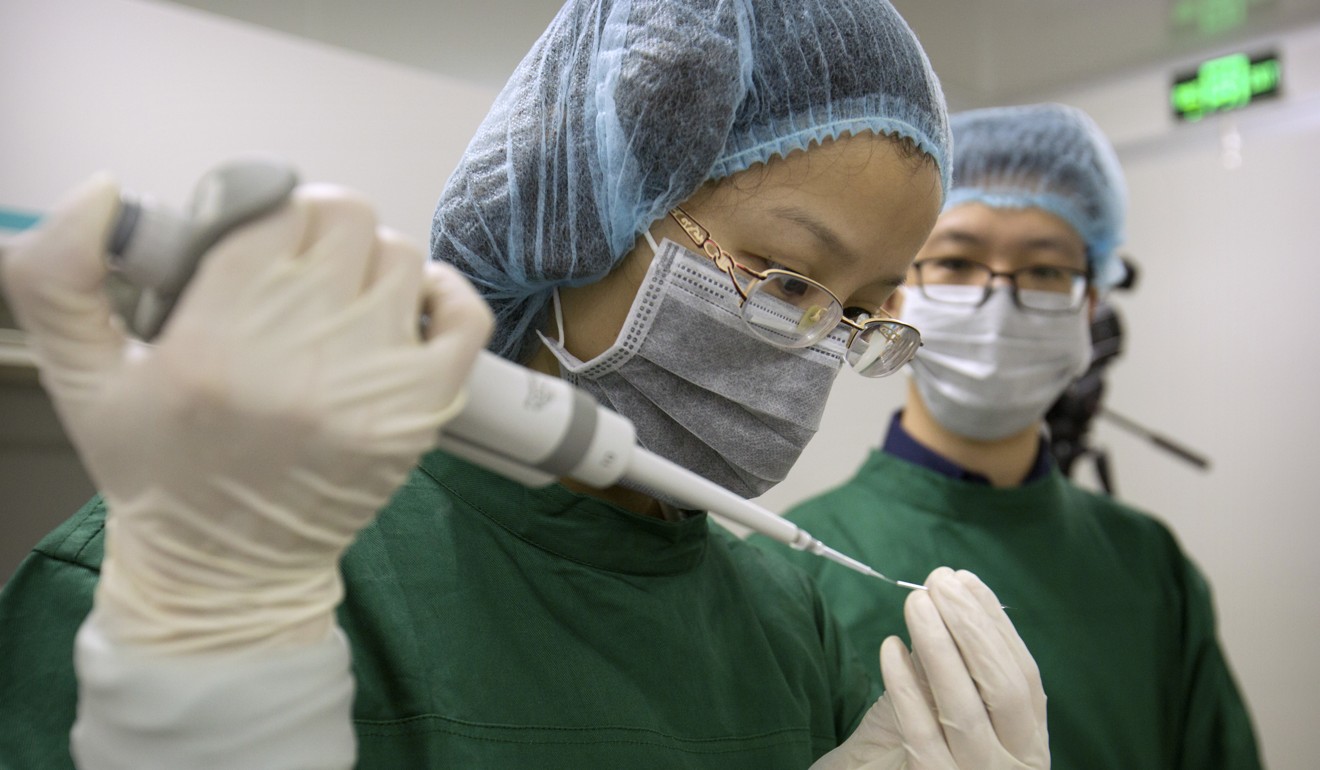
At the very forefront of genome editing technology is the modification of the human embryo. While this technology evokes fears of “designer babies” with DNA altered to enhance looks or intelligence, the scientific world has focused embryonic experiments on hereditary disease prevention. The first known embryo editing experiments were published by Chinese researchers at Sun Yat-sen University in Guangzhou in 2015, just three years after the discovery of the CRISPR-Cas9 technology. The first embryos were edited with CRISPR in the United States last year by a researcher at Oregon Health and Science University, who successfully removed the genes associated with inherited diseases.
These exercises were purely experimental until He’s assertion that he had implanted the gene-edited embryo for twins into a woman.
Chinese scientist He Jiankui at centre of gene-editing controversy ran second experiment on human embryos, new document reveals
Why is gene editing controversial?
When scientists edit the human embryo they are creating changes that have the potential to impact the genetic composition of future generations. Unlike edits that are made to developed human cells, which will only affect a person treated with those cells, edits made to sperm, eggs cells or embryos can be inherited. Scientific bodies globally have said that such a weighty impact needs to be carefully considered and deliberated with the public before it is used.
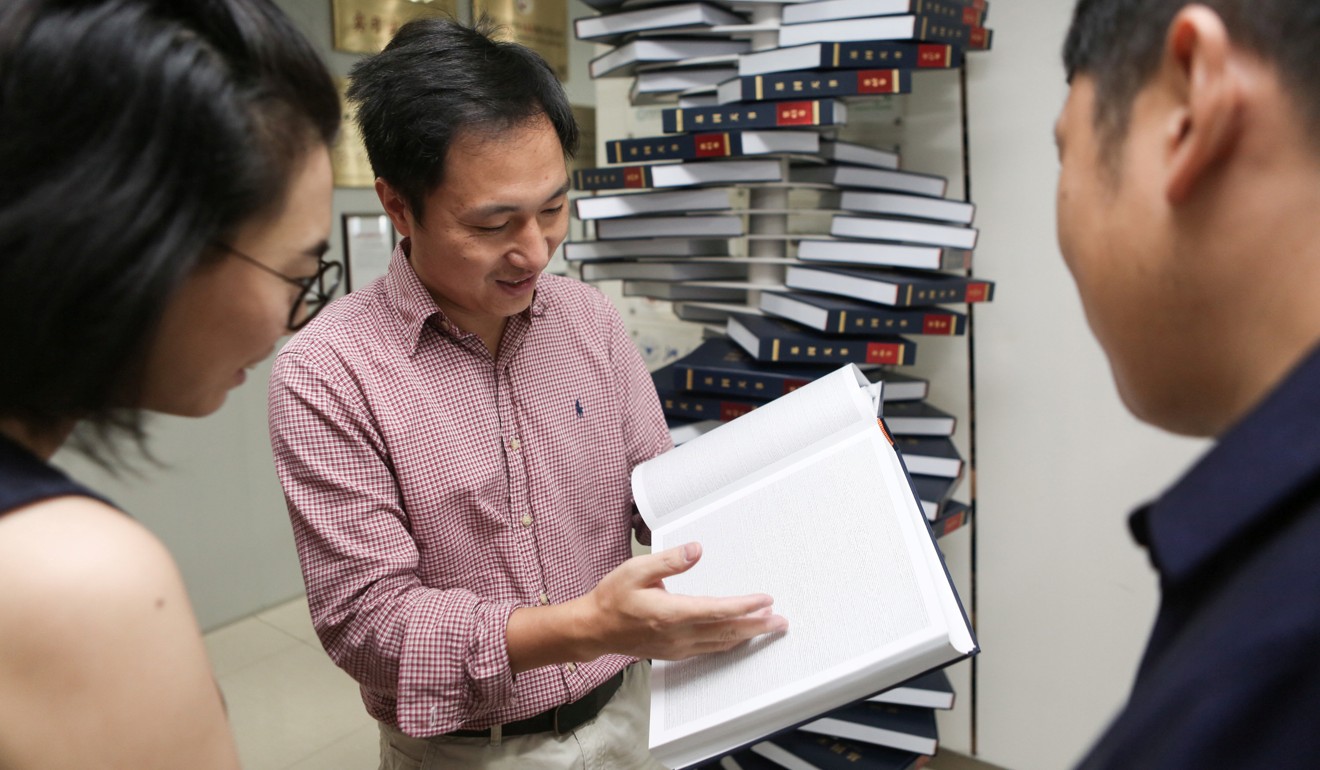
When it comes to the current controversy surrounding He, another ethical consideration is health. Because the technology is so new, the effects that the editing process may have on the DNA and the resulting human life are unknown. Scientists around the world are asking if He carefully considered the future health of the babies before using this new technology.
The birth of the twins strikes at the heart of the “designer babies” concerns that are often voiced around genome editing. However, physical and personality attributes are usually linked to multiple genes, so while the human genome may be edited, selecting for such effects would be complicated to pull off. For now, science has steered its experimentation towards the elimination of disease, not the selection of desirable traits.
Chinese scientists condemn ‘crazy’ and ‘unethical’ gene-editing experiment
What are the regulations for gene editing in Hong Kong and elsewhere?
Faced with the radical implications of this technology, national scientific associations across the world have come out with regulations and recommendations for its use, but legal restrictions between countries vary. In the absence of stringent regulations, China has been able to step into CRISPR human trials years before their American counterparts, who are still waiting for federal approval to begin the first human CRISPR clinical trials outside China. Both the US and Britain began human embryo editing last year, with legal restrictions on implantation in humans. In Hong Kong, such lab procedures must undergo inspection and licensing by the Council on Human Reproductive Technology. There is similar regulation in mainland China, which requires gene editing experiments to have research institute approval and bans human implantation.
The US National Academies of Sciences, Engineering, and Medicine last year released a widely subscribed-to set of regulations for admissible forms of genome editing in human embryos. The guidelines call on scientists to only edit genomes when there is no “reasonable alternative” to prevent a serious disease or condition and ample supporting research about the target gene. They include criteria for how such experiments should be monitored and ask for “broad ongoing participation and input from the public” and “oversight mechanisms” to regulate the use of the technology.







